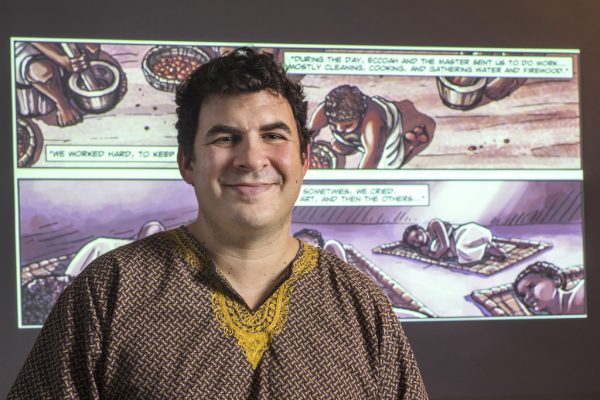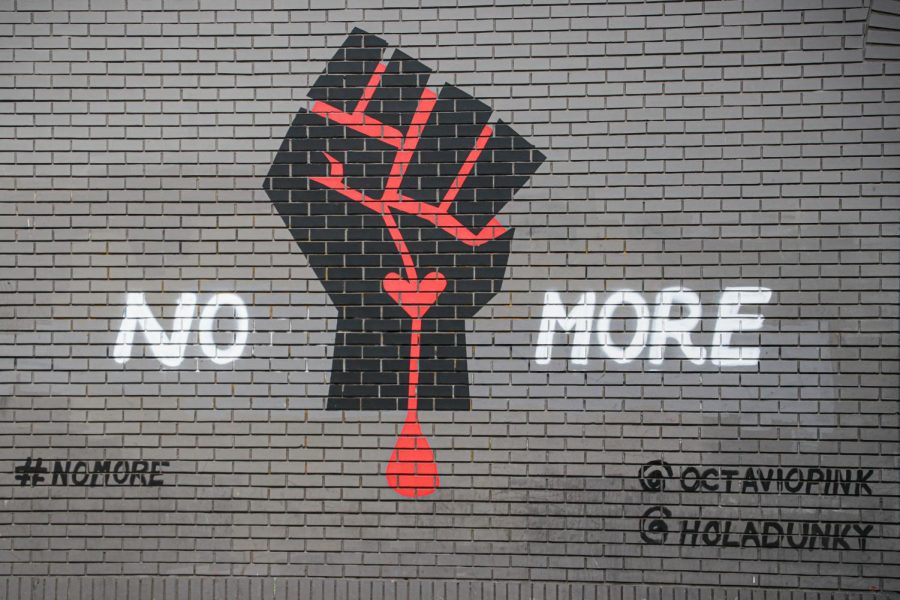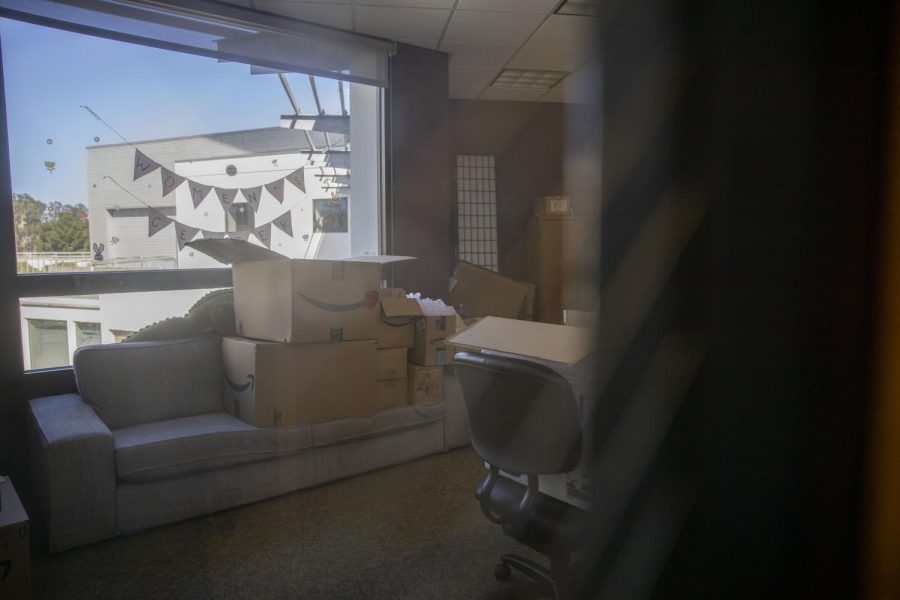History and comic books may seem like an unlikely pair; that’s why history professor Trevor Getz prefers the term “scholarly graphic novel” to define his work so far.

Getz takes areas of study he describes as “flattened” for a textbook and gives them layers. The reader is no longer limited to interpreting the material through text: they have a visuals, characters and a storyline.
Getz layered his lesson plan three years ago when he published “Abina and the Important Men,” a scholarly graphic novel based on the 1876 trial between Abina Mansah, a west African woman who escaped unlawful enslavement, and her former master.
“She was the most silenced kind of person: young, black, African, enslaved, the people who get written out of history,” said Getz. “It was clear to me that Abina’s testimony spoke to issues that weren’t discussed very broadly. I wanted it to reach a wide audience, not to become a scholarly paper that gets put on the shelf and read by 10 people.”
“Abina” won awards and became reading material at more than 250 colleges and universities. The book’s success inspired Getz to apply “Abina’s” model to other areas of study. He formed Motion Education Applications Inc., a company creating digital applications that explain academic material with sound, graphics and text.
These scholarly graphic applications are meant to replace textbooks — which Getz believes limit the scope of learning — with a digital interface that allows users to engage with the material. Instructors can guide their students through the reading with a digital lesson plan they create and students can interact by linking from the screen to more information, footnotes and forums with other readers.
The applications’ emphasis on user communication is designed to improve students’ understanding of history, English literature and other subjects that rely on analysis and discussion.
“I think any medium that allows people to analyze and interact with the subject matter, opens a discussion and that allows history to be examined,” said Keith Riley, Getz’s former student.
A local venture capitalist recently invested in the scholarly graphic application. To further develop the project Getz needs additional funding, which he hopes to get from SF State in addition to high schools and businesses.
Soon, Getz will begin to recruit cinema majors, MFA students, graphic artists and computer science majors to his join his existing team with his investor and two Oakland-based artists.
Getz hopes that like “Abina,” his digital endeavors will incite public discussion about the ways students learn and how schools can challenge their current education format.
“Fact is based on sources and sources are always to be evaluated,” said Getz’s creative consultant, Conrad Meyers II. “No matter what’s happening, you can always take a step back and be like, ‘Why is this important for me to know and why should I trust it?’”
Motion Education Applications Inc. plans to release its first scholarly graphic application before next fall.





